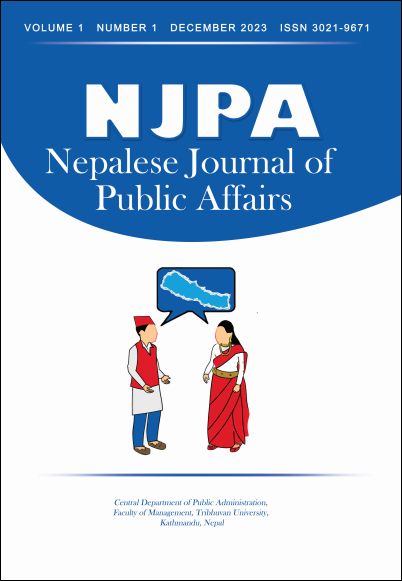The Review of Affirmative Action for the Inclusive Civil Service of Nepal
DOI:
https://doi.org/10.3126/njpa.v1i1.63288Keywords:
Representative bureaucracy, Affirmative action, Outputs, Civil ServiceAbstract
This article examines the executing effects of affirmative action for the inclusive civil service of Nepal. Affirmative action is part of a broader social inclusion agenda introduced after the Comprehensive Peace Agreement (CPA) signed in 2006. The reservation system as a tool of affirmative action has been performing its role, which has been adopted since 2007, after the second amendment of the Civil Service Act, 1993. This article employed the descriptive research design based on the systematic review of secondary data for the analysis. In a nation like Nepal, it can be challenging to implement affirmative action successfully since it includes challenging redistributive behaviors and welfare societal norms as well as centuries-old discrimination that is reinforcing every day. The construction of target groups in affirmative action based on social categories as indicators of discrimination leads to debate regarding its good intentions. Two unintended implications arise from this: firstly, affirmative action can foster inter-group differences and polarization between targeted and non-targeted groups, potentially fueling discrimination and resentment. Secondly, there is a risk of overlooking inequalities within social groups, as observed in Nepal's civil service positions, where reserved spots may be filled by relatively well-off families, neglecting economically disadvantaged individuals. These unintended consequences highlight the complexity of affirmative action and emphasize the need for careful consideration and evaluation to address potential drawbacks and ensure fairness and inclusivity.
Downloads
Downloads
Published
How to Cite
Issue
Section
License
Copyright (c) 2023 The Author(s)

This work is licensed under a Creative Commons Attribution 4.0 International License.
This license enables reusers to distribute, remix, adapt, and build upon the material in any medium or format, so long as attribution is given to the creator. The license allows for commercial use.




